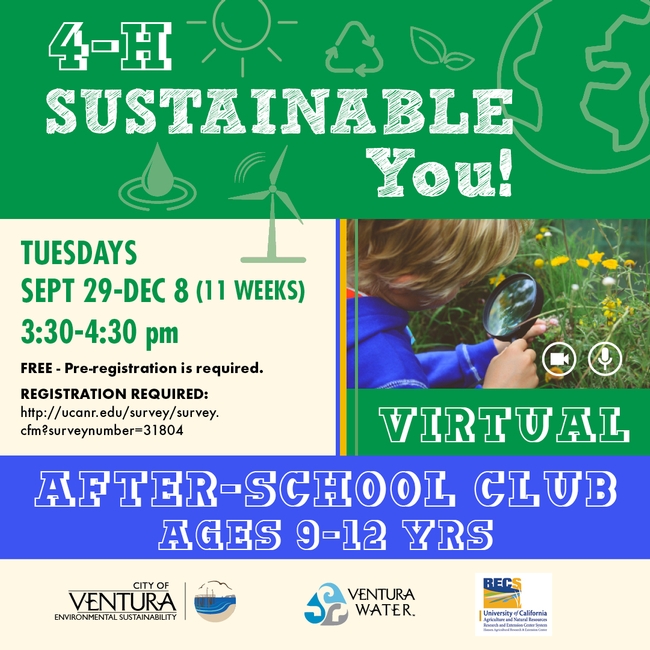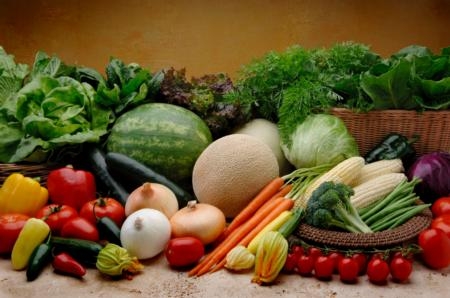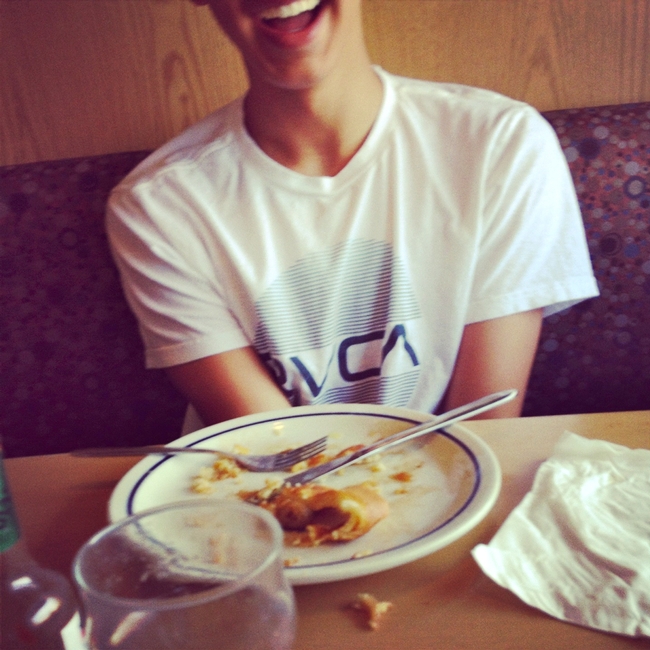- Author: Rose Marie Hayden-Smith
The University of California Cooperative Extension (UCCE) 4-H Program is offering a free, virtual, after-school club for youth ages 9-12. The club – Sustainable You! – will focus on sustainability issues, including land, water, energy, food, and air. Youth do not need to be a member of 4-H to join, and again, there is no cost for participating.
A typical meeting will include:
- An introduction to a sustainability topic with an ice breaker;
- A discussion or video on the day's topic;
- A demonstrated activity;
- Games and art; and
- An activity that youth can do on their own.
The program consists of weekly meetings, which will be held on Tuesdays from 3:30-4:30. It runs for 11 weeks, from September 29ththrough December 8th. The virtual after-school club is part of the online educational programs being organized by UCCE Ventura County. Learn more here.
While there is no cost, registration is required. Attendance is limited to no more than 50 youth.
The program is organized by UCCE educators, in partnership with the City of Ventura Environmental Sustainability Division and Ventura Water.
For more information, email Susana Bruzzone Miller.
The University of California Cooperative Extension (UCCE) is part of the University of California Agriculture and Natural Resources division. UCCE advisors offer research-based information in support of agriculture and natural resources. We also offer community-based educational programs, such Master Gardener and 4-H.
4‑H provides experiences that enable young people to learn by doing. Since 1914, 4‑H has welcomed young people of all beliefs and backgrounds, giving them a voice to express who they are and how they make their lives and communities better.
Through life-changing 4‑H programs, nearly six million kids and teens across the US have taken on critical societal issues, such as addressing community health inequities, engaging in civil discourse and advocating for equity and inclusion for all.
Photo by Guillaume de Germain for Unsplash.

- Author: Cris L. Johnson

Over 38,000 monthly Food Share clients are expected to benefit from this program. Last year's volunteers collected over 6,500 pounds of food and a goal of 7,500 pounds to food marks this year's goal.
The UCCE office in Ventura has set up a donation bin in our lobby. If you would like to contribute at our office:
Location: UC Cooperative Extension
669 County Square Dr., Ste. 100
Ventura, CA 93003
Dates: October 9, 2012 through November 9, 2012
Hours: Monday through Friday, 8:00 am to 5:00 pm
Link here to learn more about Food Share, the TOTSOCE program and other ways this group serves the county.
- Author: Cris L. Johnson

"Fresh Fruit and Vegetables: A Centerpiece of A Healthy School Environment"
They are offering a two-day training and will provide fun, interactive activities and tools for school personnel and others to use to support an increase of fresh fruits and vegetables on school campuses.
For more information or to register please visit: http://www.healthyschoolenvironment.org/workshop-registration
- Author: Rose Hayden-Smith
Not long ago, a friend asked several of us to jot down some memories about the kitchen tables in our lives. The operating premise of the exercise was that food is central to our relationships, and that much of life occurs around the places where we eat, and those we choose to eat with.
My kitchen table memories are varied. My family moved quite frequently when I was young: our kitchen table was a sort of “movable feast.” In my faith tradition, this term has a very specific meaning that informs my attitudes toward food. (For the very literary minded, it is also the title of a wonderful memoir written by Ernest Hemingway late in his life).
I have wonderful memories about kitchen tables. In our home near Philadelphia, I remember my older sister sitting at the table in the spacious kitchen, trying to cajole me to eat more before we went to church. I was served the best pancakes I’ve ever eaten at that very table. It was at this table where my brother once committed the serious transgression of launching scrambled eggs at my sister, using his fork as the springboard. (This happened exactly once.) A few years later, in the San Fernando Valley, close by some citrus orchards where the California State University campus now stands, I recall eating wonderful meals at our new home, which featured a formal dining room, where my parents proudly used the plastic fruit I’d bought them as a gift as the table’s centerpiece.
I remember my Grandmother Eloise’s elegantly appointed dining room table in Clinton, Miss., where we always drank heavily sugared iced tea from the tallest glasses I'd ever seen, being certain to clink the ice with long handled silver spoons. My grandmother’s was the most modern kitchen I’d ever seen, and she dressed up for every meal. Only a few miles away, in Jackson, we also took supper with my other grandparents, RJ and Pauline, at their kitchen table in a modest home on a quiet tree-lined street. These grandparents, raised in a small rural community, fed us homegrown sliced tomatoes, stewed okra, skillet cornbread, fish caught by my grandfather, and bowls of steaming hot (and spicy!) gumbo.
I also remember the dinette set in my family’s small camping trailer, where my dad prepared and fed his kids Kraft Mac & Cheese and tuna fish. (Different food generation, but great dad!) It was also the table where we played board games and cards by lantern light, watching the Firefall at Yosemite Park. After dinner, games and a soothing cup of hot chocolate, the dinette set was folded down and became the bed I slept on.
When my husband and I got our first apartment, we went to a used furniture store called Egypt's and bought a tiny bowed kitchen table. It was constructed of particleboard and covered with faux wood laminate. We used it for years. It was where we prepared our budget-wise home cooked meals every night, clipped coupons and prepared for graduate exams.
When we bought our home, we found ourselves with more space, but little cash to furnish it. While visiting a second-hand store in our tiny downtown, we fell in love with a large, heavy table. It was a little dinged up, was missing the leaves, but clearly had been loved by a large family. It featured an extra set of legs in the middle of the table, meant to support it at its grand length when fully extended. We paid what was for us a small fortune to purchase the table, and got friends to help us move it. We had no chairs, so a friend gave us three turn-of-the-(last)-century chairs salvaged from the U.S. Maritime Commission Office in Long Beach. They don't match the table or each other, but we've never cared and have kept them. They are simply marvelous.
We live in a small home, so our table serves as both kitchen and dining room table, just a foot or so from the counter and the stove. While a smaller table might make more sense, I'd never let this one go. We refinished it several years ago, and it turns out that it's quite an unusual and valuable table, worth many, many times what we paid for it.
It's certainly priceless to me, mostly because it's anchored our family in this house. As the child of movable tables and movable feasts, I've found its constant presence uniquely reassuring. It's where we prepare food and school projects and where I do much of my writing. It's where I sat my daughter and bandaged her first skinned knee. It’s where the three of us share breakfast together every morning. Where we’ve hosted birthday and holiday celebrations, team parties, teen gatherings, study groups and committee meetings (all involving good food and good people). Where we’ve had important family discussions, shared memories, and laughed. It's where my husband reads the sports page, where I fume over the editorial page, and where my daughter and I craft and sew. It's sited between two windows three feet from our side fence, where honeysuckle grows lush and fragrant, and where the poinsettia transplanted from our neighbor’s yard more than 20 years ago blooms brightly.
The kitchen table hosts ever-changing coverings. A tablecloth given to us by friends after their trip to Guatemala. Another one made by my sister, with matching napkins. An antique lace cloth I found in a small store near home. On very special occasions, we let the wood speak for itself.
I don't know the history of the table before it joined our family, but it has claimed a central place in our family's history. After we purchased this table, the table we purchased from Egypt’s was recycled to hold an ever-growing collection of plants. It finally expired a few years ago. I was sad to see it go.
Have a safe and happy summer, filled with healthy and delicious food, eaten at tables you love, with those you cherish.
Photo credit: Natalie Smith, Foothill Technology High School





